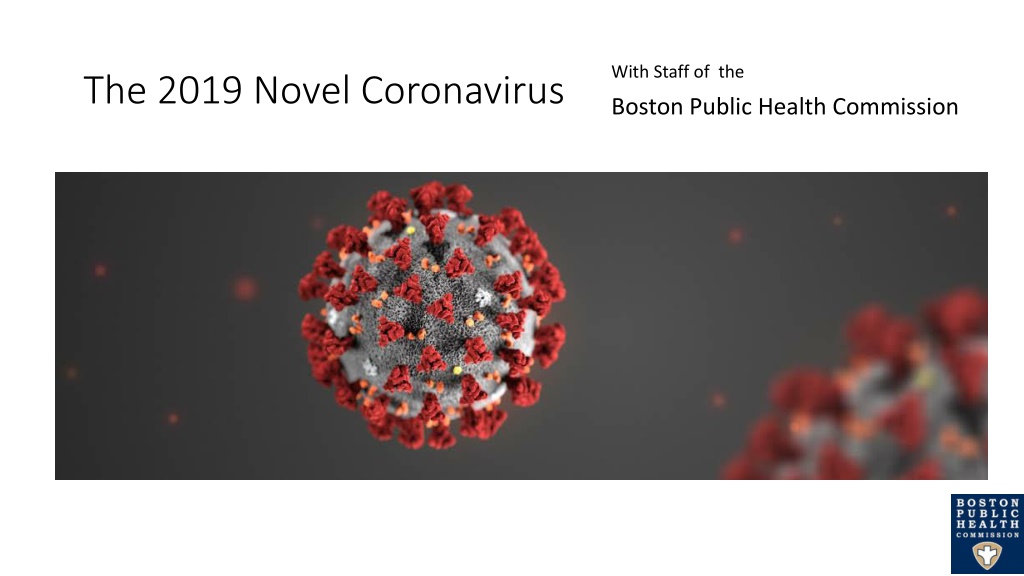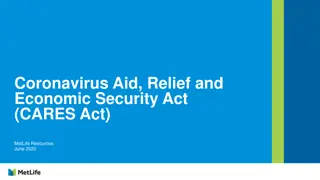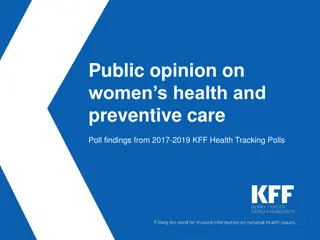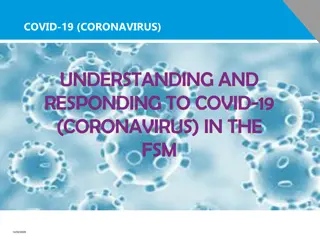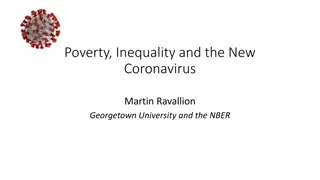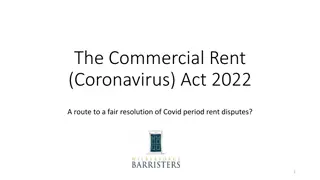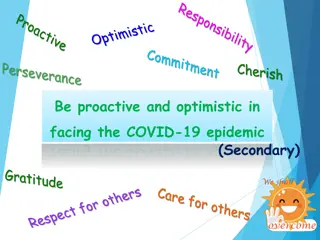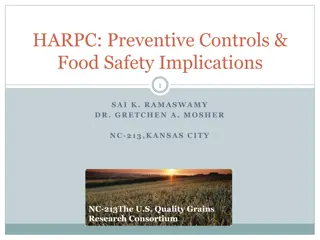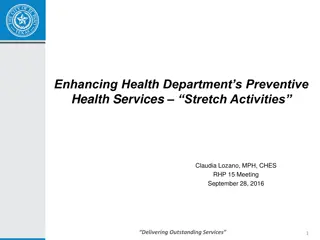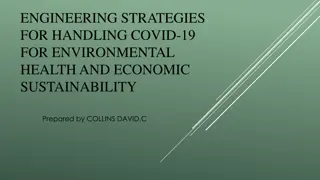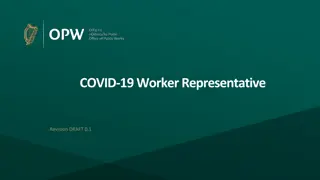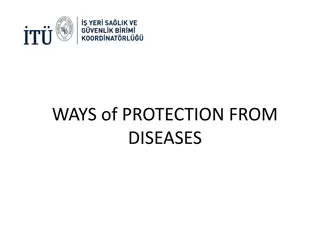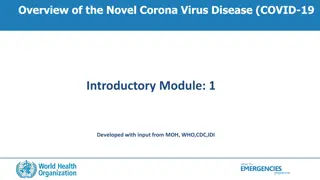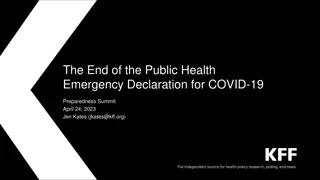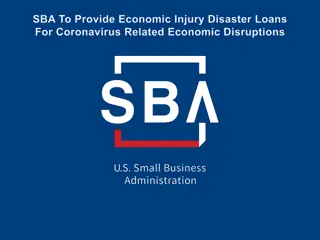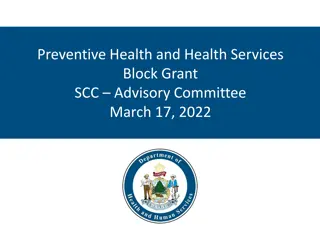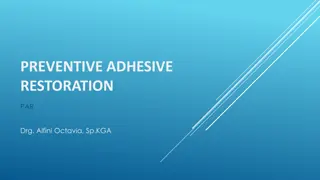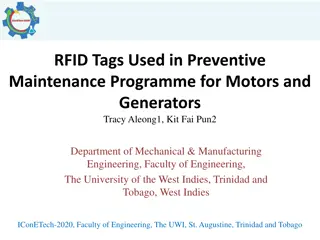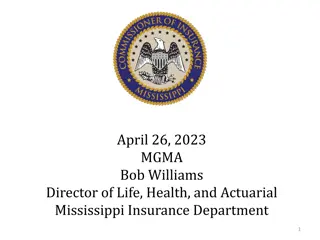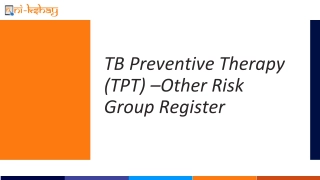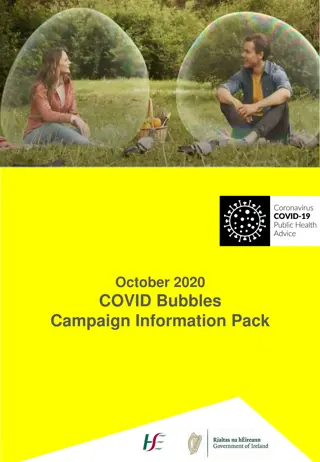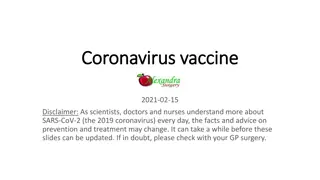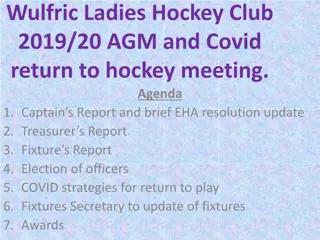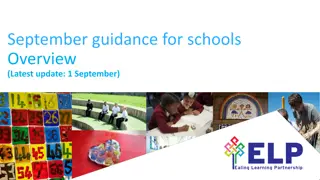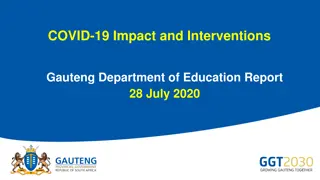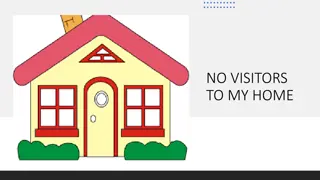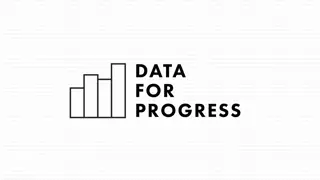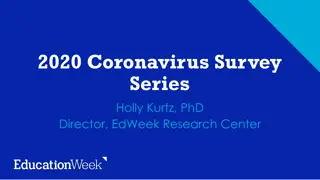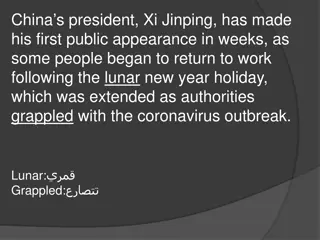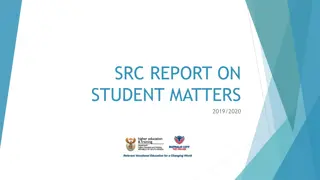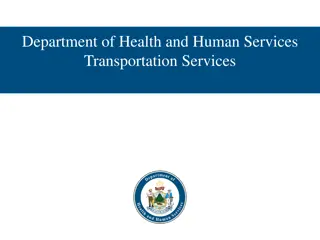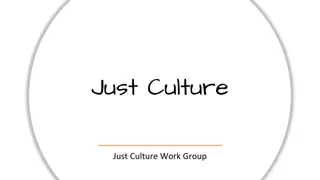Understanding the 2019 Novel Coronavirus (COVID-19) and Preventive Measures
This informative content focuses on the 2019 Novel Coronavirus (COVID-19), its spread, symptoms, high-risk individuals, prevention methods, and public health strategies. It includes images illustrating the virus, its detection, global cases, spread mechanisms, symptoms like cough, and preventive measures such as hand washing, avoiding close contact, and disinfection. Learn about the origins of COVID-19, how it spreads, and ways to protect yourself and others.
Download Presentation

Please find below an Image/Link to download the presentation.
The content on the website is provided AS IS for your information and personal use only. It may not be sold, licensed, or shared on other websites without obtaining consent from the author. Download presentation by click this link. If you encounter any issues during the download, it is possible that the publisher has removed the file from their server.
E N D
Presentation Transcript
With Staff of the Boston Public Health Commission The 2019 Novel Coronavirus
To understand what is the 2019 Novel Coronavirus To understand how it spreads and who is at risk Learning Objectives To identify strategies for interrupting racial bias To identify best practices for prevention and wellness
First detected in Wuhan, China and has spread to 141 countries worldwide What is the What is the 2019 Novel 2019 Novel Coronavirus Coronavirus (COVID (COVID- -19)? A new strain of coronavirus Coronaviruses (CoV) are a large family of viruses that cause illness ranging from the common cold to more severe diseases Middle East Respiratory Syndrome (MERS-CoV) and Severe Acute Respiratory Syndrome (SARS-CoV) are examples of coronaviruses 19)?
Animal-to-people Person-to-person Close contacts (about 6 feet) When an infected person coughs or sneezes Touching contaminated surfaces or objects How does COVID-19 spread?
Cough Symptoms can appear between 2-14 days after exposure Fever Shortness of breath
Individuals at High Risk for Complications PEOPLE WITH CHRONIC MEDICAL CONDITIONS LIKE HEART DISEASE, DIABETES, LUNG DISEASE OLDER ADULTS PREGNANT WOMEN
How can COVID-19 be prevented? Wash hands often with soap and water for at least 20 seconds or use alcohol- based hand sanitizer Avoid touching eyes, nose, and mouth with unwashed hands Avoid the virus. Avoid close contact with people who are sick Stay home when you are sick Cover your cough or sneeze Do not share drinks, food, or eating utensils Clean and disinfect frequently touched objects and surfaces
A public health practice that aims to prevent sick people from coming in close contact with healthy people. People are asked to: Social Distancing Remain out of congregate settings, Avoid mass gatherings, and Maintain physical distance (approx. 6 feet) from others.
Goals of Social Distancing To reduce opportunities for disease transmission, To reduce the chance of infection among high-risk populations, and To reduce the burden on health care systems and workers.
Steps for Social Distancing SCHOOLS, COLLEGES, & UNIVERSITIES HAVE SUSPENDED IN-PERSON CLASSES & CONVERTING TO REMOTE ONLINE INSTRUCTION EVENTS, INCLUDING SPORTING EVENTS, FESTIVALS & PARADES HAVE BEEN CANCELLED OR POSTPONED WORKPLACES ARE ENCOURAGED TO OFFER FLEXIBLE WORK OPTIONS, INCLUDING TELECOMMUTING HOUSES OF WORSHIP, COMMUNITY AND RECREATIONAL CENTERS HAVE SUSPENDED SERVICES ORGANIZATIONS AND BUSINESSES ARE CANCELING LARGE GATHERINGS, INCLUDING CONFERENCES RESTAURANTS AND EATERIES RESTRICTED TO TAKE OUT AND DELIVERY ONLY
Who is at risk of acquiring COVID-19? EMERGENCY RESPONDERS AND OTHER HEALTHCARE PROFESSIONALS PEOPLE WHO HAVE RECENTLY TRAVELED TO AREAS WITH WIDESPREAD OR SUSTAINED COMMUNITY TRANSMISSION CLOSE CONTACTS OF PEOPLE DIAGNOSED WITH COVID-19
Healthy individuals do not need to wear facemasks People who may need to use facemasks include: People with suspected or confirmed COVID-19 infection who have respiratory symptoms Relatives or caregivers of people with suspected or confirmed COVID-19 infection Healthcare workers entering a hospital room where people with suspected or confirmed COVID-19 are being treated Who Should use Face Masks to protect against COVID-19?
The U.S. State Department issued a travel advisory recommending Americans reconsider travel abroad. What can travelers do to protect themselves and others? Many areas throughout the world are now experiencing COVID-19 outbreaks and taking action that may limit traveler mobility, including quarantines and border restrictions. Even countries, jurisdictions, or areas where cases have not been reported may restrict travel without notice.
If you have symptoms consistent with COVID- 19 virus and have traveled to an area with widespread transmission of COVID-19 in the past 14 days If you experience symptoms and have been in contact with someone who has tested positive for COVID-19 infection in the past 14 days Talk to your Healthcare Provider if Healthcare providers will get detailed travel and contact history from patients with fever and acute respiratory illness to determine if patient needs to be tested for COVID-19.
People suspected to have COVID-19 should Call ahead before visiting your doctor so they can prepare for your arrival Separate yourself from people and animals in your home Wear a face mask when around other people Wash hands often with soap and water for at least 20 seconds. Disinfect and sanitize high touch surfaces and objects frequently
How is COVID-19 treated? There is no specific antiviral treatment People infected with COVID-19 should receive supportive care and help to relieve symptoms People who think they may have been exposed to COVID-19 should consult with a medical provider right away
When to Stop Home Isolation People diagnosed with COVID-19 will be assigned a Public Health Nurse who will help to monitor their health and determine when they can stop home isolation. For people who suspect that they have COVID-19, and have chosen to self-isolate, CDC states you can stop home isolation if: You have had no fever for at least 72 hours (without the use medicine that reduces fevers) AND other symptoms have improved (i.e. cough or shortness of breath have improved) AND at least 7 days have passed since your symptoms first appeared
3 Impacts of a Pandemic 3 Impacts of a Pandemic Stigma, Xenophobia and Racism Mental Health, Trauma and Addiction Highest Burden on the Most Vulnerable
COVID-19 and Stigma Centers for Disease Control Some groups of people who may be experiencing stigma right now because of COVID-19 include: Persons of Asian descent and those perceived as Asian People who have recently traveled Emergency responders or healthcare professionals Stigma hurts everyone by creating fear or anger towards other people. Stigmatized groups may be subjected to: Social avoidance, bullying or rejection Denials of healthcare, education, housing or employment Physical and psychological violence
Reduce Stigma with FACTS Reduce Stigma with FACTS COVID-19 doesn't recognize race, nationality, or ethnicity. Anyone, from anywhere, is susceptible to this virus. COVID-19 started in Wuhan, China. That's just geography. Having Chinese ancestry-- or any other ancestry -- does not make a person more vulnerable to this illness. Refer people to reputable, trusted sources: www.cdc.gov www.bphc.org https://www.mass.gov/orgs/department-of-public-health
COVID COVID- -19 and Racism or Xenophobia 19 and Racism or Xenophobia Global anxiety about the outbreak of the coronavirus has led to the spread of much misinformation and scapegoating. we have seen a rise in incidents of bias, harassment, bullying, isolation, exclusion and xenophobia against Chinese people and those who are perceived as being Chinese. -Anti Defamation League www. health.mn.gov
COVID-19 and Racism or Xenophobia Speak up if you hear, see or read misinformation and Report harassment. Interrupt Interrupt Gently correct false information and remind the person that prejudiced language and actions make us all less safe. Speak Up Speak Up Image result for keep calm and speak up Create institutional policies that reflect anti-racist values and culture of belonging.
COVID COVID- -19 and 19 and Mental Health, Trauma and Addiction Mental Health, Trauma and Addiction Public health Crises like this exacerbate other health conditions OCD, PTSD, Anxiety, Eating Disorders, Depression- worse symptoms/less help Immune systems especially taxed; Cortisol levels high In home Family/Caregiver supports suspended Personal care providers for elderly, sick and hospice patients State monitoring visits increases in domestic violence, child abuse, neglect Ongoing and Acute Care interrupted In-person support groups for Addiction and Recovery Substance Use Disorder Clinics are closed, Psychiatry/Therapy via phone
COVID COVID- -19 and the Most Vulnerable 19 and the Most Vulnerable Know who will be hurt/burdened the most People of Color, People with Disabilities, hourly or tip wage staff, service workers, local shopkeepers, youth, elderly... our loved ones! Observe, track, keep data now in order to advocate effectively for appropriate recovery resources later. Remember that resource hoarding hurts our most vulnerable populations the most Stock Up don t Stockpile
Moving Forward Moving Forward What can YOU (and MCC) do? What can YOU (and MCC) do? We are in this together, my/your fate is our shared fate; Think I=WE With a lens of Solidarity and Sensitivity -Elena Chang Raise awareness of less visible impacts on the most vulnerable members of our communities Stay physically distant but socially connected! Spread love.
Resources www.bphc.org/2019ncov https://www.cdc.gov/coronavirus/2019-ncov/index.html https://www.cdc.gov/media/releases/2020/p0121-novel-coronavirus- travel-case.html https://www.mass.gov/guides/information-on-the-outbreak-of-2019- novel-coronavirus-2019-ncov https://massculturalcouncil.org/blog/an-update-to-our-response-to-covid- 19/
